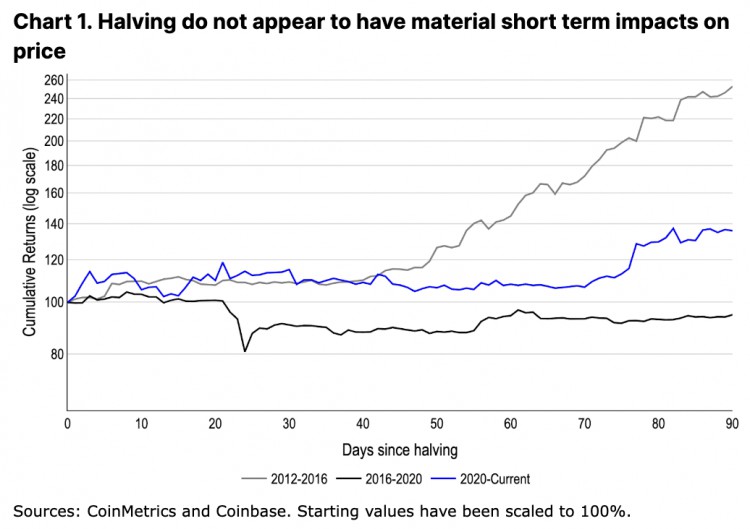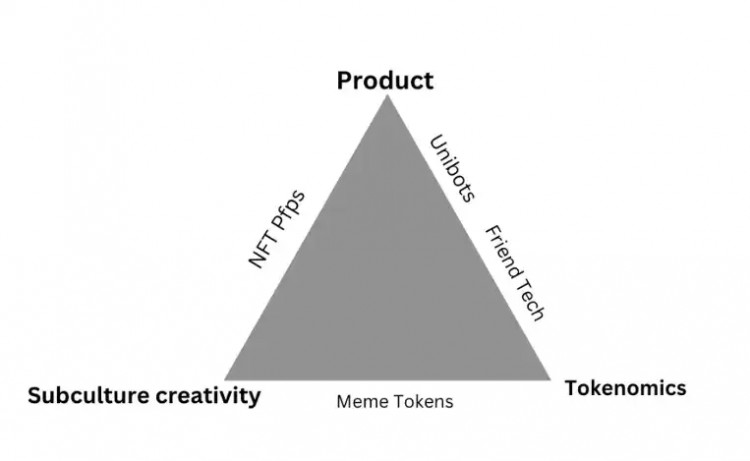摘要:TheKellycriterionandtheBlack-Scholesmodelarecomplementaryinstrumentsinthemarketbecausetheyaddressdifferentaspectsofriskmanagementandbetsizing,respectively...
凯利准则是一种彻底改变赌博和投资的数学策略,用于优化赌注规模以实现长期财富最大化。该公式根据获胜概率计算最佳赌注大小,但其实际应用需要针对加密货币等波动市场中的交易成本和心理因素进行调整。
本文将解释凯利准则是什么、它是如何工作的、如何在加密货币交易中使用它、与 Black-Scholes 模型的并列,以及相关的好处和陷阱。
什么是凯利标准投注?
凯利准则是一种数学技术,用于赌博和投资,用于计算一系列投注的理想规模。其基本思想是最大限度地减少金融风险的机会,同时提高资本随时间增长的速度。除了潜在的盈亏比之外,该算法还考虑了赢得或输掉赌注的可能性。
凯利标准的中心原则是根据投注的优势或优势以及可用赔率在投注之间分配资金。凯利准则的目标是通过将一部分资本分配给边缘来最大化增长,同时最小化风险。
良好的凯利比率是指使预测的财富对数最大化并产生最强的长期增长率的赌注规模。必须承认,尽管凯利准则提出了理论上的理想方法,但在实践中,可能需要进行调整以适应包括交易费用、估计不确定性和心理方面在内的变量。
凯利准则的历史
凯利准则以其创始人小约翰·L·凯利 (John L. Kelly Jr.) 的名字命名,于 1956 年在他在贝尔实验室任职期间制定。它的用途很快从其优化长途通信中的信噪比的最初目的扩展到赌博和投资。
然而,这些领域后来才意识到这一点,这主要是由于数学家爱德华·索普的努力。通过在 21 世纪 60 年代初将凯利准则应用于二十一点算牌,索普用他的书《打败庄家》改变了赌博业。
该公式在金融领域获得了进一步的重视,尤其是在 20 世纪 80 年代,当时投资者和研究人员意识到它可以很好地管理投资组合和优化风险。凯利准则是一种简单而有效的决策技术,可以帮助个人和组织在正确管理风险的同时实现利润最大化。
凯利准则是如何计算的?
凯利准则的公式表示为f* = (bp - q) / b。F为投注资金比例,p为获胜机会,q为失败概率(1 - p),b为通过投注赚取的净赔率(包括本金回报)。
这个公式表明了为了最小化失败的机会和最大化增长率而下注的理想资本百分比。它在防止重大损失的必要性和快速扩张的目标之间达成了妥协。
凯利准则提供了一种根据赔率和感知的投注优势来调整投注大小的系统方法。尽管它在理论上提供了最佳方法,但在实践中,通常需要进行调整以考虑不同方面,包括风险承受能力、交易成本和概率的不确定性。
相关:什么是道氏理论,它如何应用于加密货币?
如何在加密货币交易中使用凯利准则
在加密货币交易中使用凯利准则需要采取一些关键行动来实现有效的风险控制和财富最大化。使用市场研究和指标,交易者必须首先确定不同结果的概率,例如加密货币资产价格变动的可能性。任何进一步决策的基础都是这种概率估计。
然后,交易者制定风险管理计划,概述他们准备在单笔交易中投入的最高资金比例。此程序可确保明智的资源分配,同时有助于减少可能的损失。此外,确定加密货币交易中的p和损失q涉及市场研究、对市场动态的深入了解、历史数据分析,有时还需要由于市场固有的波动性和不可预测性而需要复杂的预测模型。
交易者在设置风险参数后,然后使用凯利准则公式计算理想的赌注大小。它通过考虑赔率、获胜概率和失败概率来确定下注的资金部分。在凯利标准的背景下,“资金”是指赌徒或投资者可用于投注或投资的资金总额。
At this point, volatility analysis is essential because the crypto market’s high volatility can significantly impact bet sizing and risk assessment. The process requires constant reevaluation, and as market conditions change, bet sizes and probabilities must be adjusted accordingly. To maximize their strategies over time, traders need to be alert and receptive to new information.
Using the Kelly criterion in the context of cryptocurrency trading, let’s say a trader assesses the likelihood that a specific coin will appreciate by 60%. Furthermore, the trade has odds of 2:1, which indicates that the possible return is twice the amount wagered (b = 2).
To calculate the optimal bet size using the Kelly criterion formula:
The calculated f* = 0.4 indicates that 40% of the trader’s bankroll represents the ideal bet size. This means that the trader should commit 40% of their capital to this specific trade. However, before making any investing decisions, it’s critical to take other aspects like portfolio diversification, market conditions and personal risk tolerance into account.
Also, be aware that the above example provides a theoretical optimum that may not account for all real-world variables, such as transaction fees, slippage or the psychological impact of large bets on the trader. Although the Kelly criterion offers a useful framework for figuring out the ideal bet sizes, it should only be applied in conjunction with thorough risk management techniques and continuous market research.
The Black-Scholes model vs. the Kelly criterion
The Black-Scholes model and the Kelly criterion are two distinct concepts in finance with different applications. The Black-Scholes model is a mathematical method used to determine the theoretical price of European-style options. It was developed by Fischer Black and Myron Scholes. By offering a framework for pricing options contracts based on variables, including the price of the underlying asset, volatility, time to expiration and interest rates, it transformed the world of options trading.
However, John L. Kelly Jr.’s Kelly criterion is a method that can be used to determine the ideal size of bets to maximize long-term wealth creation, especially in situations where the outcome is unclear. The Kelly criterion and the Black-Scholes model are complementary instruments in the market because they address different aspects of risk management and bet sizing, respectively.
Related: What is Gresham’s law, and how does it relate to cryptocurrencies?
Advantages of Kelly criterion in crypto trading
The Kelly criterion offers several benefits when used in conjunction with crypto trading tactics. It provides a systematic way to determine the best position size for every trade depending on the trader’s edge and risk limits by selecting the percentage of capital to devote to each deal, decreasing the probability of substantial losses in turbulent market conditions.
The Kelly criterion promotes a disciplined approach to trading by emphasizing long-term growth above short-term gains. Through constant capital allocation based on the perceived edge of each deal, traders may eventually increase their total returns.
Additionally, the Kelly criterion encourages a balanced and long-term trading strategy by assisting traders in avoiding overleveraging or underutilizing their money. This is especially critical in the volatile and fast-moving world of cryptocurrency markets, where long-term success depends on effective risk management.
A flexible tool for traders with varying risk tolerances and market perspectives, the Kelly criterion can also be tailored to different trading styles and methods. Crypto traders can increase the consistency of their performance and boost their risk-adjusted returns by implementing the Kelly criterion into their trading strategies.
Limitations of Kelly criterion in crypto trading
Although the Kelly criterion provides insightful information, there are certain limitations on how it can be used in cryptocurrency trading. Given the extreme volatility and unpredictability of cryptocurrency markets, the Kelly criterion presupposes a precise calculation of probabilities and expected returns, which can be difficult. Excessive price fluctuations in crypto assets are frequently caused by non-financial causes, which complicates accurate probability calculations.
External elements like market sentiment, regulatory changes or technological breakthroughs specific to the crypto business are not taken into consideration by the Kelly criterion. These elements have the potential to greatly alter market dynamics and reduce the accuracy of the Kelly criterion’s computations.
Additionally, traders may be exposed to significant losses during times of market volatility due to the aggressive position sizing technique of the Kelly criterion. Such drawdowns can swiftly deplete capital in cryptocurrency trading, where price swings can be swift and substantial, resulting in significant losses.
Furthermore, the rigid formula of the Kelly criterion might not adequately account for different risk appetites or trading styles. Its application in various trading contexts may be limited by traders with varying risk tolerances or strategies, who may find it unrealistic or excessively conservative.
This article does not contain investment advice or recommendations. Every investment and trading move involves risk, and readers should conduct their own research when making a decision.




